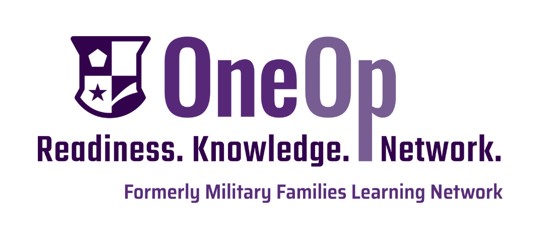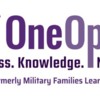By: Sara Croymans adapted by Anna Peterson
Part 1 of this blog post introduced the topic of military mental health and suicide and provided a variety of resources. To learn more, go back and read the blog post here.
Many Service members and veterans with mental health needs are not seeking treatment for mental health care. One study found that more than 60% of veterans of the Iraq war that screened positive for post-traumatic stress disorder (PTSD), generalized anxiety, or depression did not seek treatment (Hoge et al., 2006).
Service members may be hesitant to seek help for a variety of reasons. Tanielian (2016) found that concerns about the attitudes and perceptions of military leadership could have negative career consequences for those who access care-influenced help-seeking behavior.
Defining Mental Health Stigma
Stigma is often cited as a reason why many people, among service members and veterans, may choose not to seek care. Acosta et al. (2014) defined mental health stigma “as a dynamic process by which a service member perceives or internalizes this brand or marked identity about himself or herself or people with mental health disorders” (p. 8). The authors identified four contexts that create stigma, including; individual, social, institutional, and public contexts. Within these four contexts, Acosta and colleagues (2014) identified four immediate outcomes linked to stigma: interpersonal outcomes, coping mechanisms, attitudes toward treatment-seeking, and intentions to seek treatment. In addition, the authors identified four long-term outcomes that literature has theoretically linked to stigma: well-being, quality of life, treatment-seeking behavior, and treatment success.
Normalizing the Conversation

In April, I attended the 2023 Military Mental Health Conference: Stomp the Stigma at Camp Ripley in Minnesota. Sponsored by the Military Mental Health Coalition, the conference focused on understanding mental health, reducing the stigma surrounding mental health concerns within our military and their families, and networking. The keynote presenter, Pete VanDusartz (MA, LCSW, ICS, SAC, Director Valley Behavioral Health, Health Partners, St. Croix County, WI) introduced “Make It OK.org,” a community campaign
to reduce stigma by increasing understanding and creating caring conversations about mental health and illness. This community campaign defines stigma as “a set of negative and often unfair beliefs that a society has about something.”
Mental health and illness stigma can be in the form of exclusion, silence, and labeling. Make It Ok.org provides easy-to-understand information about stigma, mental illness, and common conditions, as well as simple tips for conversations that Extension professionals can use. They also offer a free Ambassador program for individuals passionate about reducing mental illness stigma in their community.
Strategies Extension Professionals and others can use to Address Mental Health Issues and Reduce Stigma
Research offers numerous strategies to address mental health issues and related stigma. Tipton (2023) suggests leveraging prevention efforts by building mental health education around the core values of the military, including character, integrity, loyalty, and honor. The author suggests that connecting these core values to supporting mental health efforts could shift attitudes and encourage help-seeking and prevention efforts (Tipton, 2023).
Other research suggests using an overall wellness model that considers both physical and mental health as interconnected; allowing appropriate interventions without risk of the service member losing their benefits or their career (Dedeaux & Lewis, 2021).
Embedding mental health professionals within military units can promote normalizing mental health needs, and increase convenience and accessibility for service members. Peer support models and training for all personnel on how to identify risk factors and conduct risk assessments may reduce stigmatization and promote help-seeking (Tipton, 2023).
In March 2021, in an effort to address stigma as a barrier to help-seeking, the Deputy Secretary of Defense identified strategies to support the DoD’s priority focus on people, including suicide prevention and mental health (DoD Annual Report on Suicide in the Military, n.d.). Strategies from the report included:
- create a working group to address stigma toward help-seeking resulting from perceived impacts on security clearances and career advancement
- review policy language to identify and revise language that may inadvertently cause stigma toward help-seeking
- focus on education for service members on the availability and benefits of resources.
Become familiar with these resources:
American Foundation for Suicide Prevention (AFSP) provides resources on advocating for suicide prevention, and information on community programs and local chapters.
Military OneSource provides a
National Alliance on Mental Illness (NAMI): Veterans & Active Duty web page offers information, support and education specifically for veterans, service members and their families.
National Institute of Mental Health shares information on depression, Post Traumatic Stress Disorder, suicide prevention and more.
OneOp provides a variety of Suicide Awareness Content, including:
- On-demand webinars:
- Warrior Wellness: Mental health and Women in the U.S. Military
- Suicide Prevention and Working with Military Families
- Blog posts:
SAMHSA (Substance Abuse and Mental Health Services Administration) provides several military-specific resources, including Cultural Competency for Servingn the Military and Veterans and Service Members, Veterans, and their Families Technical Assitance Center .
Suicide Awareness Voices of Education (SAVE) equips individuals, groups and communities to prevent suicide; provides peer support by connecting individuals with shared experiences; and provides grief support to survivors of suicide loss.
Veterans Crisis Line (Dial 988 then press 1) provides confidential crisis support 24/7. Add this resource to your phone contacts for easy future access and referral. Encourage the service members you work with to also add this number to their phone contact list.
References:
Acosta, J. D., Becker,A., Cerully, J.L., Fisher, M.P., Martin, L.T., Vardavas, R., Slaughter, M.E., and Schell, T.L. (2014). Mental Health Stigma in the Military. Santa Monica, CA: RAND Corporation, https://www.rand.org/pubs/research_reports/RR426.html
Dedeaux, J. A., & Lewis, R. K. (2021). Does the physical and mental health of veterans differ by military branch? Journal of Prevention & Intervention in the Community, 49(3), 207–220. https://doi.org/10.1080/10852352.2019.1654260
Department of Defense (DoD). (n.d.). Department of Defense Annual Report on Suicide in the Mitillary: Calendar Year 2021. Retrieved from https://www.dspo.mil/Portals/1...h%20CY21%20DoDSER%20(1).pdf?ver=tat8FRrUhH2IlndFrCGbsA%3d%3d
Hoge, C., Auchterlonie, J., & Milliken, C. (2006). Mental health problems, use of mental health services, and attrition from military service after returning from deployment to Iraq or Afghanistan. Journal of the American Medical Association, 295(9), 1023-1032. doi:10.1001/jama.295.9.1023
Tanielian, T., Woldetsadik, M. A., Jaycox, L. H., Batka, C., Moen, S., Farmer, C., & Engel, C. C. (2016). Barriers to engaging service members in mental health care within the US military health system. Psychiatric Services, 67(7), 718-727. https://ps.psychiatryonline.or...76/appi.ps.201500237
Tipton, S. (2023).Risk factors for suicidality in active-duty military: A critical literature review [Psy.D., Azusa Pacific University]. https://www.proquest.com/docvi...2BCF93FCE46B473BPQ/1
Photo Source: Pixabay
Anna Peterson, Program Coordinator, OneOp Family Transitions




Comments (1)